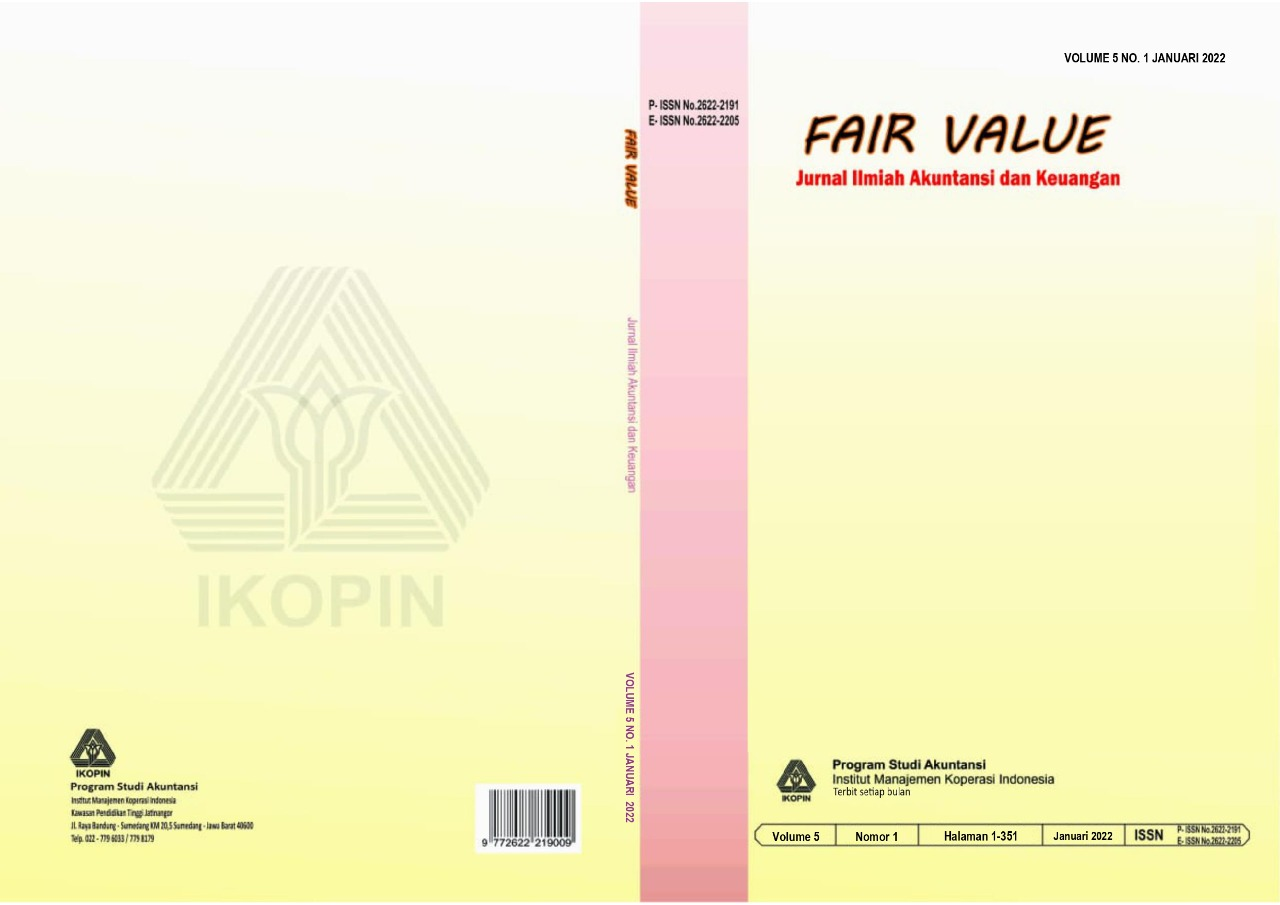Testing for break-even effect in the indonesian capital market
Main Article Content
Abstract
This study aims to find out whether investors experience a break-even effect. The research method used in this study was the Leal et al. (2017) method to find the break-even effect. The results show a break-even effect in several years, 2012 and 2015. This means that only in those two years did individual investors experience a break-even effect as indicated by the Proportion of Winners Additionally Purchased (PWAP), which was more significant than the Proportion of Losers Additionally Purchased (PLAP). The limitation of the research is that there are still several other methods that can be developed to find the break-even effect. Bullish and bearish market conditions are also expected to influence investors' decisions. The research implication for securities companies and capital market authorities is that it is necessary to support individual customers through education to avoid these two effects. Investors need to be aware of the break-even effect. Research on individual investors is still minimal. In addition, it uses a sample of secondary data from individual investor transactions to find the relatively new break-even effect on the Indonesia Stock Exchange.
Article Details
References
Asad, H., Khan, A., & Faiz, R. (2018). Behavioral biases across the stock market investors. Pakistan Economic and Social Review, 56(1), 185–209.
Barber, B. M., Lee, Y., Liu, Y., & Odean, T. (2007). Is the aggregate investor reluctant to realise losses? Evidence from Taiwan. European Financial Management, 13(3), 423–447.
Barberis, N. C. (2013). Thirty years of prospect theory in economics: A review and assessment. Journal of Economic Perspectives, 27(1), 173–196.
Burns, S. (2014). 10 Reasons Traders Lose Money In The Market. https://www.seeitmarket.com
Candraningrat, I. R., Salim, U., Indrawati, N. K., & Ratnawati, K. (2018). Influence of framing information and disposition effect in decision of investment: Experimental study on investor behavior at Indonesia Stock Exchange Representative on Denpasar, Bali. International Review of Management and Marketing, 8(3), 59.
Elhussein, N. H. A., & Abdelgadir, J. N. A. (2020). Behavioral Bias in Individual Investment Decisions: Is It a Common Phenomenon in Stock Markets. International Journal of Financial Research, 11(6), 25.
Filbeck, G., Hatfield, P., & Horvath, P. (2005). Risk aversion and personality type. The Journal of Behavioral Finance, 6(4), 170–180.
Fioretti, M., Vostroknutov, A., & Coricelli, G. (2020). Dynamic regret avoidance. American Economic Journal: Microeconomics, 14(1), 70–93.
Fulfer, J. D., & Maille, P. J. (2018). Power and Prospect Theory. Working Paper, January. https://doi.org/10.13140/RG.2.2.12322.94409
Kahneman, D., & Tversky, A. (1979). Prospect theory: An analysis of decision under risk. In Handbook of the fundamentals of financial decision making: Part I (pp. 99–127). World Scientific.
Kapoor, S., & Prosad, J. M. (2017). Behavioural finance: A review. Procedia Computer Science, 122, 50–54.
KSEI. (2021). Statistik Pasar Modal Indonesia Desember 2021.
Leal, C. C., Loureiro, G., & Armada, M. J. R. (2017). Selling winners, buying losers: Mental decision rules of individual investors on their holdings. European Financial Management, 24(3), 362–386.
Magdalena. (2021). Jumlah Investor Ritel di Pasar Modal Naik. https://rri.co.id/ekonomi/1145509/jumlah-investor-ritel-di-pasar-modalnaik
Mitchell, C. (2018). Why Most Traders Lose Money and Why the Market Requires It. https://vantagepointtrading.com
Odean, T. (1998). Are investors reluctant to realize their losses? The Journal of Finance, 53(5), 1775–1798.
Ozkan, M., & Ozkan, O. (2020). Financial evaluation of mental accounting.
Pan, Z. (2019). A review of prospect theory. Journal of Human Resource and Sustainability Studies, 7(1), 98–107.
Prast, H. M. (2004). Investor psychology: A behavioural explanation of six finance puzzles. De Nederlandsche Bank Amsterdam.
Shefrin, H. (2002). Beyond greed and fear: Understanding behavioral finance and the psychology of investing. Oxford University Press on Demand.
Thaler, R. (1985). Mental accounting and consumer choice. Marketing Science, 4(3), 199–214.
Thaler, R. H., & Johnson, E. J. (1990). Gambling with the house money and trying to break even: The effects of prior outcomes on risky choice. Management Science, 36(6), 643–660.
Wareza, M. (2021). OJK: Gegara Covid, Jumlah Investor Ritel Hampir Tembus 4 Juta. CNBC Indonesia. https://www.cnbcindonesia.com/market/20210201191110-17-220288/ojk-gegara-covid- jumlah-investor-ritel-hampir-tembus-4-juta
Waweru, N. M., Munyoki, E., & Uliana, E. (2008). The effects of behavioural factors in investment decision-making: a survey of institutional investors operating at the Nairobi Stock Exchange. International Journal of Business and Emerging Markets, 1(1), 24–41.

